Greater Rann of Kutch
A journey of around 6 hours from Rann Riders brought us to Nakhatrana where our stay was arranged in Centre for Desert and Ocean. Our days here were to be spent exploring the Banni grasslands.
The Banni grasslands of Greater Rann of Kutch are very different from the dried up landscape of Little Rann of Kutch. Due to volcanic activity in the distant past, a few rocky hills litter the land. There is even a rock, by the name of bird rock, where one can find red-tailed wheat ears. Most of the grassland is covered by pock marks caused by thousands of cranes digging the ground for dried tubers.
 |  | |
| A truck makes its way through the Rann amidst a cloud of dust | A family of common cranes | A flock of common cranes taking off |
In our first morning safari, we came across an interesting bird known as Stoliczka's bushchat or white-browed bushchat. The bird put up quite a display for us. This territorial display, commonly known as Puff and Roll, begins with the bird sitting on a small twig or branch. Suddenly, it swoops down to the ground, puffs up its chest and struts about like a prize hen. I have no clue if this display reached its intended audience, but it provided us with an interesting and amusing spectacle.
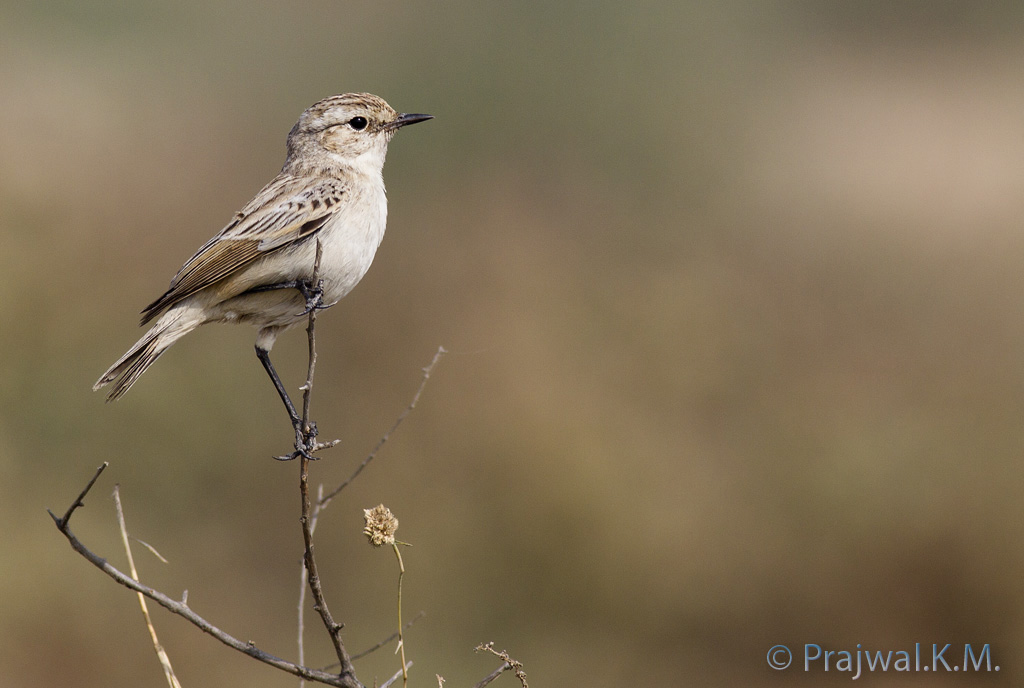 | 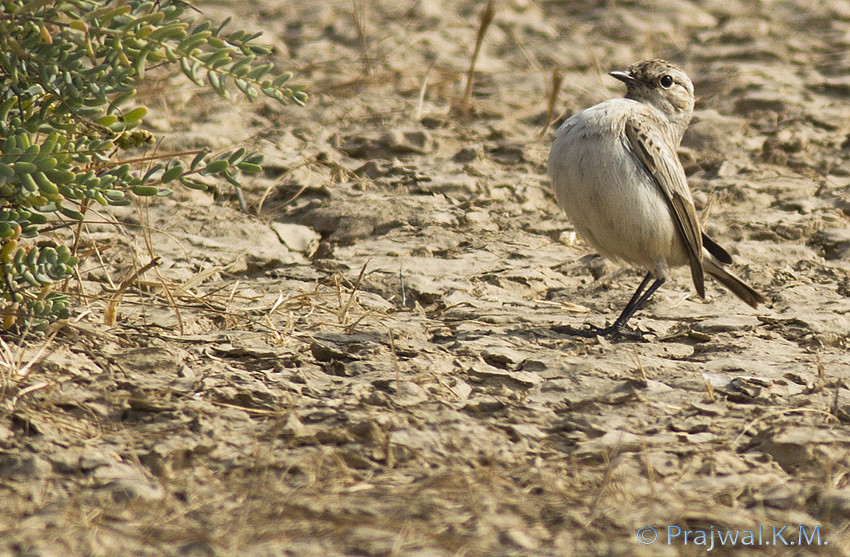 | 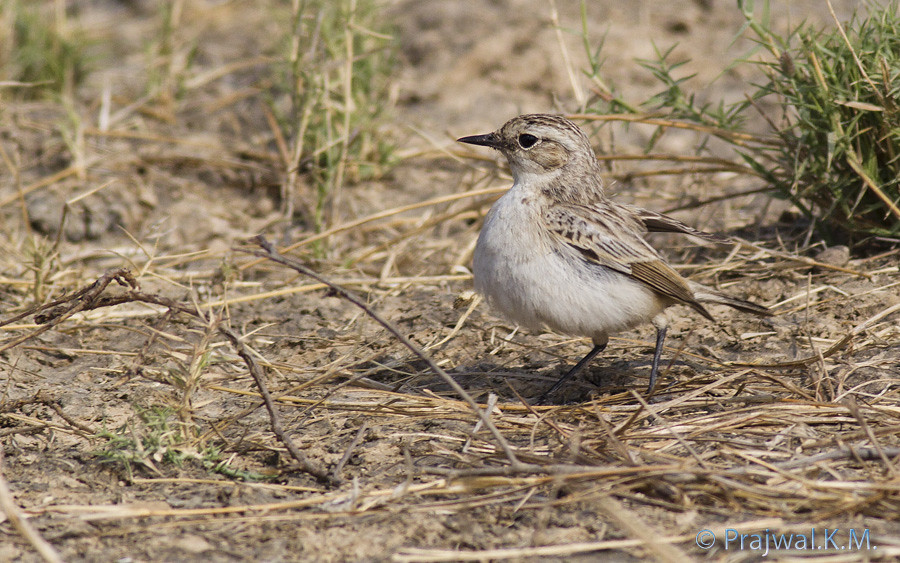 |
| Stoliczka's Bushchat sitting on a twig | Stoliczka's Bushchat display | Stoliczka's Bushchat display |
We ended this safari with a drink of camel's milk. Though a bit salty when compared to cow's milk, it is still quite tasty to drink. Since the Banni grasslands are not part of any sanctuary yet, one can see a few herds of goats and camels. The camel herders here have mastered the art of removing dirt with dirt. As water is in short supply, they use soil to wash their vessels.
 |  |
| A herd of dromedary camels | A juvenile common crane flying past a herd of goats |
We had exciting news waiting for us on our return to the resort. About a million flamingos had gathered near Khadir, which is about a few hours journey from Nakhatrana. After a quick re-planning session, we decided to spend a day in Khadir.
In the afternoon we headed for Naliya grasslands. The Naliya Grasslands is part of Lala Great Indian bustard sanctuary. It is also famous for the presence of black francolins. Though we didn't see any black francolins, this turned out to be the best safari in Greater Rann of Kutch as we saw a group of 5 Great Indian Bustards! This amounts to nearly 3% of the total population of these bustards. The bustards were very relaxed and we spent a memorable hour with them.
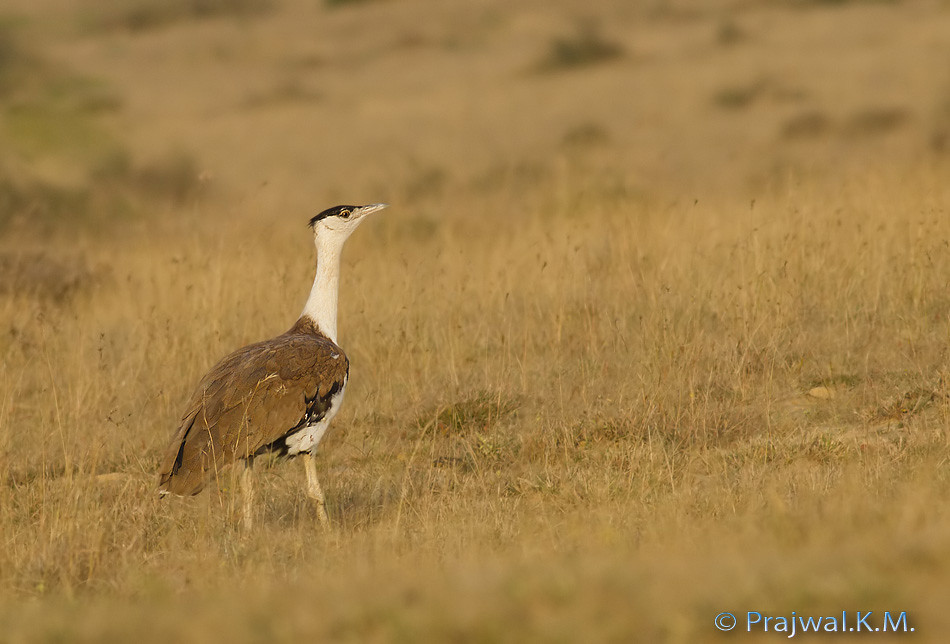 |  |
| Great Indian bustard | Four out of the group of five bustards which we saw |
Khadir
A portion of Rann is flooded in the Khadir region. In this wetland, numerous aquatic birds like greater and lesser flamingos, reef egrets, spot billed pelicans, spoonbills, Caspian terns, gulls ... gather in huge numbers.
The road to Khadir bifurcates this wetland, providing numerous bird watching/photography opportunities on either side of the road. A high voltage power line runs parallel to this road. Though we never say any flamingo fly close to the power lines, a single flamingo wing hanging from one of the high voltage lines stood as a silent testament to the terrible destructive power of such lines.
 |  |  |
| Road and power lines running through the Khadir wetlands | Flamingos behind bars |
The cacophony created by a million flamingos, pelicans and other birds cannot be described in words. Because of the overwhelming number and variety of birds, it was difficult to choose what to photograph. Imagine a scene where on one side there is a Caspian tern diving for fish or two gulls fighting over another fish, on the other side you have a flock of spoonbills feeding or a group of pelicans taking off, while all over your head flocks of flamingos are flying.
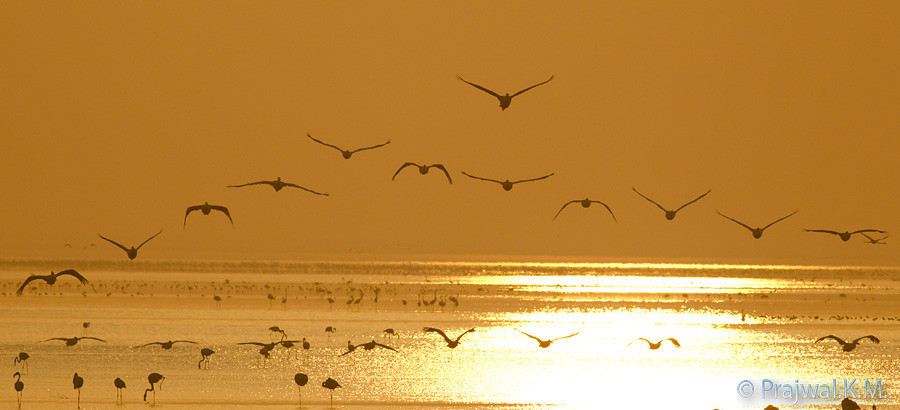 |
| A flock of pelicans |
 |  |  |
| A gull preparing to dive | Caspian tern | A flock of Greater flamingos |
 |  |  |
| Pelicans | Spoonbills and Reef Egret | Sunset in Khadir |
After spending an evening and a morning in Khadir, we headed back to Nakhatrana.
At last the day we were all dreading dawned. It was time time for the last safari into Banni. A desert cat burrow, with a lot of fresh pug marks nearby, had been discovered and we decided to spend some time near it. We hoped to sight the desert cat sunning itself in the morning sun. Though we spent nearly an hour near the burrow, we did not see even a whisker of the cat. All during this time we were kept entertained by the antics of a desert wheat ear. The way the wheat ear was hopping all over the cat's burrow it seemed as if the bird was as interested in sighting the desert cat as we were.
 |
| A desert wheat ear inspecting the desert cat's burrow |
After the safari, we bid adieu to Kutch and headed back to our mundane lives in Bengaluru.
I wish to thank Giri Cavale (http://www.toehold.in/), Jigar Tiwari (http://cedobirding.com/) and other members of the group for the wonderful experience.
I also wish to thank all the readers who made it this far. Do leave a comment if you like this post.
Some more photos:
 |  |  |
| Merlin | Variable Wheat ear | Isabelle Wheat ear |
 | 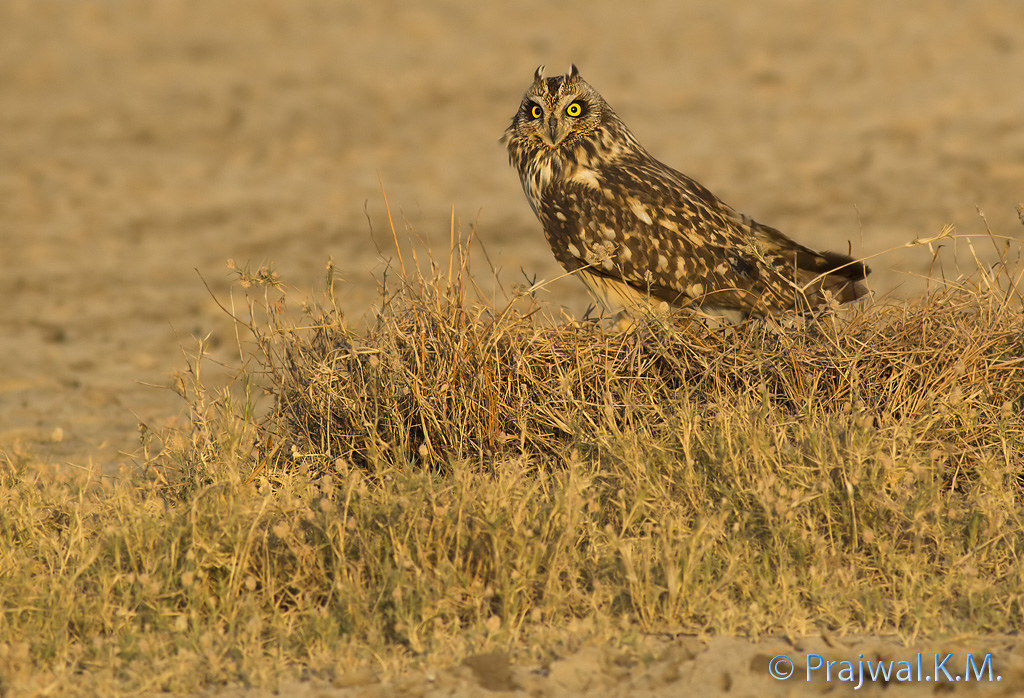 | 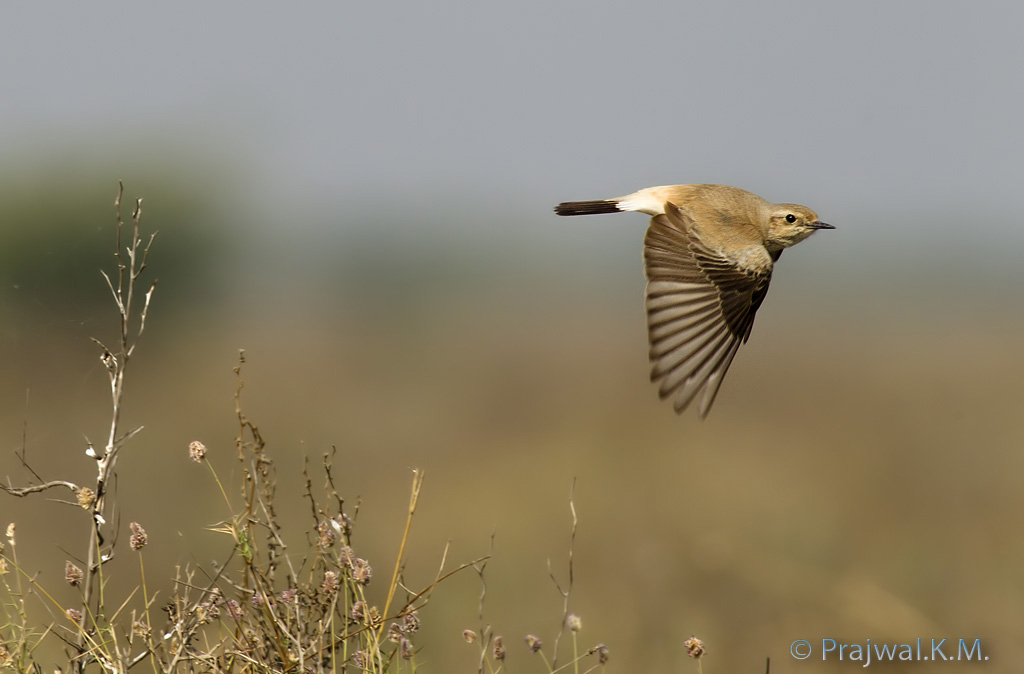 |
| Steppe Eagle | Short eared owl | Desert Wheat ear |
 | 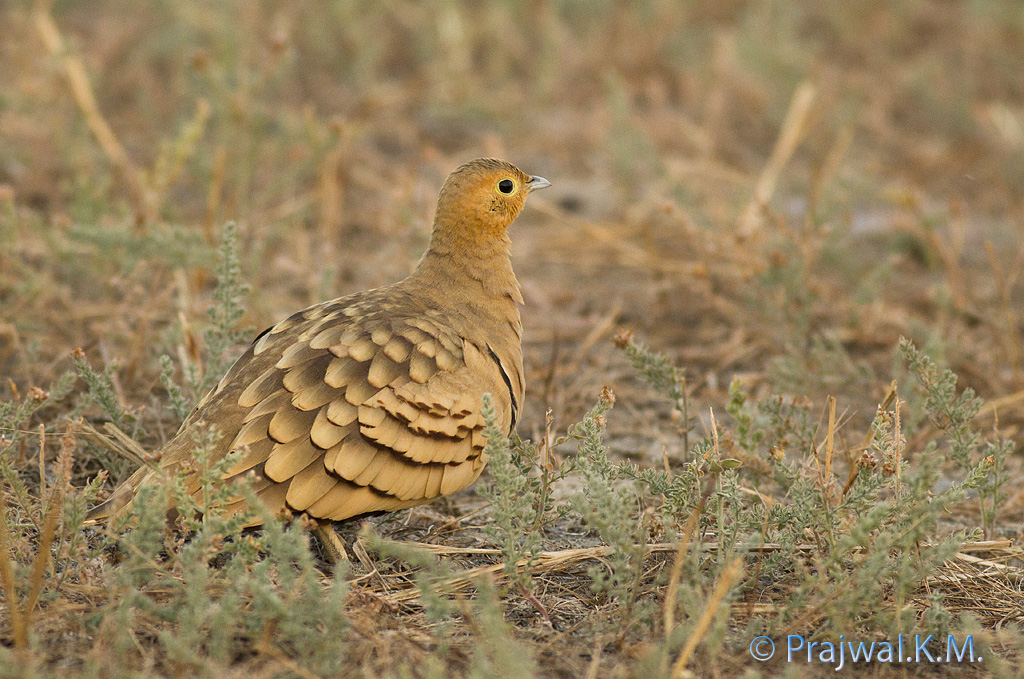 |  |
| Crested Lark | Sand grouse | Red Tailed wheat ear in bird rock |
And a video as well.
Superb post..love the video too... BTW just check on the ID of the Eagle.. looks like a Steppe to me and not a Tawny.
ReplyDeleteGreat post... It was a nice read. Excellent photos and video...
ReplyDeleteThanks Ramesh.
ReplyDelete@Angad, Thanks for the heads up. I have corrected the ID.
Wonderful post, thanks for the virtual trip :)
ReplyDelete